1. Formal Dinner Parties
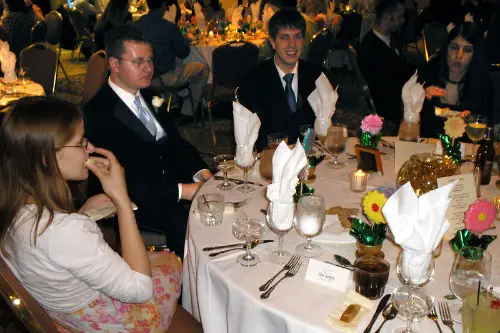
There was a time when hosting meant breaking out the fine china, polishing the silverware, and carefully crafting a four-course meal. Guests dressed up, arrived on time, and sat at a table that looked like it could have been lifted from a magazine spread. These dinners were more about ritual and tradition than just eating together. Today, the formality feels stiff to many, and casual gatherings have taken their place.
Most people now prefer a buffet-style setup or a potluck where everyone contributes something easy. The pressure of cooking an elaborate meal for a crowd can feel overwhelming in our busy lives. Socializing has shifted toward a “come as you are” vibe, which takes the edge off for both hosts and guests. While elegant dinners still exist, they’re more likely reserved for weddings or milestone celebrations.
2. Handwritten Invitations

Once upon a time, hosting an event wasn’t official until you sent out handwritten invitations through the mail. Picking out nice stationery and using your best penmanship showed care and intention. Guests anticipated opening those envelopes almost as much as the event itself. These days, digital invites are the norm, with platforms and group texts replacing the mailbox.
The change comes down to convenience and speed. A digital invite can be created in minutes, shared widely, and updated instantly if plans change. Plus, they’re cost-free compared to printed and mailed cards. Still, many people admit receiving a physical invitation feels more personal, which is why wedding and baby shower invites often keep the tradition alive.
3. Greeting Guests at the Door with Drinks

There used to be a strong emphasis on offering a welcome cocktail or aperitif the moment someone walked in. It was a gesture of hospitality, signaling that the host had prepared for every detail. Drinks set the tone for the evening and gave people something to do with their hands as they settled in. Now, many gatherings skip this ritual in favor of a self-serve bar or cooler.
The shift reflects a move toward relaxed hosting. Letting guests help themselves takes pressure off the host, especially when juggling food, music, and conversation. People also have different drinking preferences, and a single “welcome” drink doesn’t always suit everyone. As a result, flexibility has replaced ceremony, and the emphasis is on comfort.
4. Strict Dress Codes
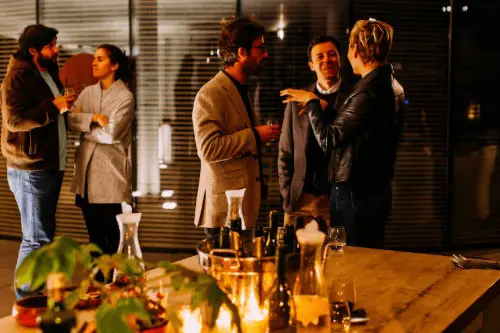
In the past, attending a dinner or cocktail party often meant adhering to a specific dress code. Men wore suits or at least sport coats, and women typically donned dresses or skirts. Hosts believed dressing up showed respect for the occasion and the effort put into hosting. Now, gatherings lean heavily toward casual attire.
This change reflects broader cultural shifts around formality. With more people working remotely or blending work and leisure wardrobes, dressing up feels unnecessary. Comfort has become a priority, and many hosts would rather their guests feel at ease than fuss over clothes. Today, “smart casual” is often the most you’ll see enforced.
5. Elaborate Centerpieces

A beautiful floral arrangement or ornate centerpiece was once considered the hallmark of a thoughtful host. People spent time and money creating table displays that sometimes overshadowed the food itself. The centerpiece wasn’t just decoration—it was part of the hosting performance. Nowadays, it’s more common to see simple candles, greenery, or nothing at all.
The shift is partly practical: elaborate displays can block sightlines, making conversation harder. They’re also expensive and wasteful, especially if flowers wilt after just a few days. Many hosts now prioritize minimalism and sustainability, choosing decorations that can be reused. The result is a focus on people and food rather than display.
6. Assigned Seating
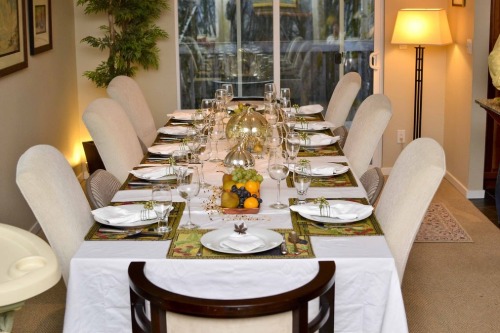
Hosts once spent considerable effort planning seating charts, ensuring the right mix of personalities and avoiding awkward pairings. Place cards were common, and guests were expected to stick to their assigned spots. This ritual was seen as a way to control the flow of conversation. Today, most gatherings leave seating up to chance.
Unstructured seating feels more natural and allows people to mingle freely. Guests can choose who they sit with based on comfort, not a host’s preplanned scheme. It also removes one more task from the host’s already long to-do list. In the end, it’s a win for spontaneity and ease.
7. Full-Service Dinners

There was a time when the host—or hired staff—brought each course to the table, clearing plates in between. It mirrored the restaurant experience and was considered the pinnacle of good hosting. Guests could focus solely on conversation while everything was taken care of. But with fewer households having help and busier lifestyles, this tradition has faded.
Self-serve styles like buffets and family-style meals are far more common now. They encourage interaction as guests pass dishes around and serve themselves. It also reduces the workload for the host, who no longer has to manage timing each course perfectly. People often find this format warmer and more inclusive.
8. Sending Guests Home with Leftovers in Fancy Packaging

It wasn’t unusual for hosts to prepare little parcels of leftovers or desserts in decorative boxes or bags. It was a way to extend hospitality beyond the evening itself. Guests felt cared for, and the host gained a reputation for generosity. Now, leftovers are often simply offered in whatever plastic containers are on hand—or skipped altogether.
This tradition declined partly because fewer people cook large amounts for gatherings. With smaller, more casual meals, there’s often nothing left over. Even when there is, most hosts don’t keep special packaging just for the occasion. The gesture is still appreciated, but it’s far less formal than it used to be.
9. Toasting Every Course

At formal dinners, it was once common for the host or guests to give a short toast at different points in the meal. These moments marked transitions and added a sense of ceremony. It was considered both polite and celebratory. Today, toasts are usually reserved for special occasions like weddings or milestone birthdays.
The decline reflects changing attitudes toward alcohol and formality. With more people choosing not to drink or preferring moderation, constant toasting feels excessive. Many gatherings also move at a faster pace, leaving little room for structured speeches. A single toast, if any, is now the standard.
10. Hostess Gifts as a Requirement
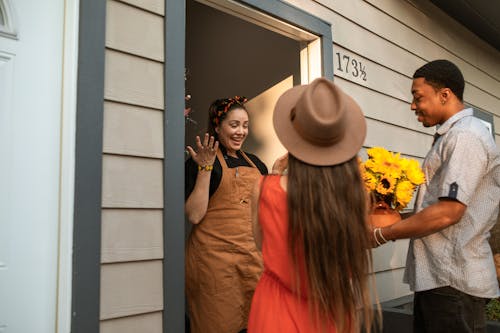
Guests once felt obligated to bring a hostess gift, whether it was flowers, wine, or a decorative item for the home. It was considered rude to show up empty-handed. The practice reinforced the idea that hosting was a significant effort that deserved recognition. Now, while gifts are still appreciated, they’re no longer an unspoken rule.
The change comes from shifting cultural expectations and the desire for less transactional socializing. Many hosts actually prefer guests not to bring anything, especially perishables that require attention during the event. Instead, people may bring something simple if they truly want to, but there’s no longer the same social pressure. The result is a more relaxed, guest-focused atmosphere.
11. Multi-Course Desserts

Formal dinners once often ended with more than one dessert—perhaps a fruit course, a cheese plate, and then something sweet. These courses were a way to show abundance and sophistication. Guests lingered over coffee and digestifs while savoring each step. Today, most hosts offer a single dessert or skip it entirely.
This reflects both practicality and changing dietary preferences. Many people avoid heavy sweets, and crafting multiple desserts takes time most hosts don’t have. Store-bought cakes or a simple tray of cookies are now perfectly acceptable. The focus is on ending the evening enjoyably rather than impressively.
12. Thank-You Notes from Guests

There was once an expectation that after attending a dinner party, you’d send a handwritten thank-you note. It was a way to formally acknowledge the host’s effort and reinforce social bonds. Hosts often kept these notes as mementos. Today, most thanks come in the form of a quick text or email.
The decline is tied to broader shifts in communication. Digital correspondence is faster, more casual, and better aligned with how people stay in touch. While a note still carries more weight, it’s seen as unnecessary outside of major occasions. For everyday dinners, a verbal “thank you” as you leave does the job.
13. Clearing the Table Before Dessert

Hosts once insisted on clearing the entire table—down to the last crumb—before serving dessert. It was considered a sign of good housekeeping and proper pacing. The ritual reset the meal, allowing dessert to shine as its own course. These days, many people simply bring dessert to the same table without much fuss.
The shift is partly due to more casual hosting styles. Clearing the table can feel overly formal and time-consuming, especially when everyone is already relaxed. Guests often don’t mind clutter if it means keeping the flow of conversation uninterrupted. Efficiency has replaced etiquette as the guiding principle.
14. Party Favors for Adults

Giving guests small tokens or favors used to be a sign of a thoughtful host. It might have been something handmade, a keepsake, or a novelty item. The gesture suggested that the party’s impact extended beyond the evening itself. Today, favors are mostly reserved for kids’ parties or major life events.
The decline is largely practical—purchasing or making favors can be costly and time-intensive. Many adults also see them as unnecessary clutter they won’t use. With minimalism and sustainability in mind, hosts are more focused on shared experiences than material mementos. A great evening together is now considered gift enough.
15. Pre-Event Phone Call Confirmations

Hosts once made a round of phone calls days before an event to personally confirm attendance. This ritual ensured everyone felt individually acknowledged and allowed the host to plan precisely. It also added a sense of anticipation, making the gathering feel more official. Today, most people rely on quick RSVPs through texts or group chats instead of lengthy calls.
The shift reflects how communication habits have changed. Phone calls now feel intrusive to many, especially when schedules are tight and unexpected calls can be stressful. Messaging offers flexibility and eliminates the need for small talk. As a result, the warm but time-consuming confirmation call has quietly faded from hosting culture.
16. Pre-Set Hors d’Oeuvres Trays
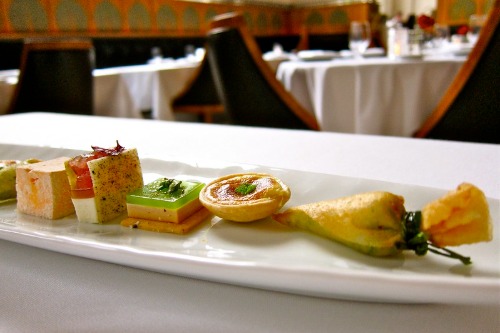
Before guests arrived, many hosts used to arrange ornate trays of hors d’oeuvres on perfectly polished surfaces. These displays were meant to impress and set an elegant tone from the moment someone walked in. Preparing them required careful timing so everything looked fresh and arranged just right. Now, most people opt for simple snacks or allow guests to bring their own appetizers.
This change stems from practicality and shifting expectations. Elaborate trays can be expensive, time-intensive, and stressful to maintain. Modern gatherings favor foods that require minimal fuss and don’t keep the host tied to the kitchen. Casual spread boards or store-bought options reflect today’s preference for ease over presentation.
17. Curated Music Playlists for Every Stage of the Evening

Hosts once spent hours crafting specific playlists for arrivals, dinner, and after-meal conversation. Music was considered a vital part of the experience and a thoughtful sign of preparation. Guests often noticed the effort, as each shift in mood matched the flow of the night. But in recent years, many people rely on algorithm-generated playlists to do the job.
This shift reflects both convenience and changing standards of entertainment. Streaming services make it easy to set a mood without manual curation, saving hosts time and stress. Guests rarely expect perfectly tailored soundtracks anymore. What matters most is that the atmosphere feels relaxed, not orchestrated.
18. Linen Tablecloths and Matching Napkins
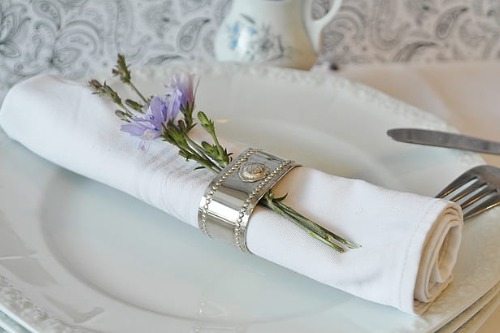
Table settings once required freshly pressed linens, often reserved for special gatherings and carefully stored between uses. Hosting meant pulling them out, ironing them, and coordinating napkins to match the theme. These touches signaled refinement and attention to detail. Today, most people use easy-clean surfaces or disposable napkins instead.
The decline comes from the time and care linens demand. Many households prefer low-maintenance options that can be tossed or wiped clean after a meal. Matching linens also feel too formal for the casual nature of most modern gatherings. The shift underscores the growing value placed on simplicity rather than ceremony.
19. The Host’s Tour of the Home

It used to be customary for hosts to walk guests through their home shortly after arrival. This mini tour showcased the space, recent renovations, or special décor chosen for the occasion. It served as an icebreaker and a gesture of openness. Today, such tours are far less common unless guests specifically ask.
Modern gatherings place less emphasis on presentation and more on shared spaces where people naturally congregate. Many hosts feel their homes don’t need to be part of the entertainment. Additionally, guests often prefer settling into the main area rather than wandering through the house. As a result, home tours have become a relic of more formal hosting eras.
20. Printed Menus for Dinner Events
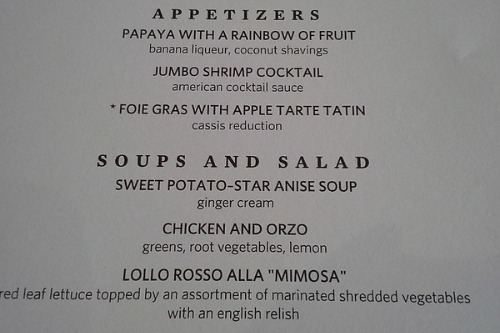
Some hosts once printed small menus to place at each setting during a meal. These menus highlighted the courses to come and added a touch of sophistication. They also signaled careful planning and elevated even small gatherings into memorable events. But today, printed menus are rarely seen outside restaurants or lavish celebrations.
The decline is tied to casual dining and spontaneous menu changes. Most hosts don’t finalize dishes far enough in advance to justify printing anything. Guests also don’t expect this level of detail for informal evenings. The emphasis has shifted from presentation to flexibility and comfort.
21. Structured Conversation Topics
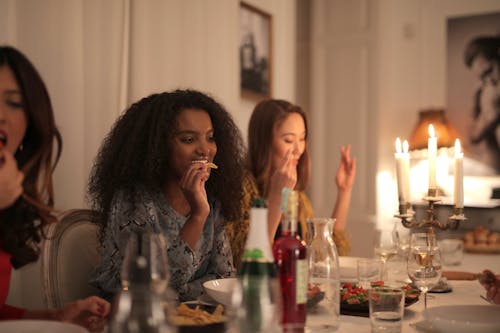
Hosts once prepared topics to introduce at different points in the evening, ensuring lively and balanced discussion. This approach was especially common at formal dinners where etiquette emphasized social grace. Conversation was meant to flow in a guided, intentional way. Today, people rely on natural interaction rather than curated talking points.
The modern shift values authenticity over structured dialogue. Guests feel more relaxed when conversation unfolds organically instead of being subtly managed. Social gatherings now prioritize ease and real connection rather than polished exchanges. As a result, pre-planned topics have quietly disappeared from most hosting practices.
This post 21 Hosting Traditions That Are Quietly Dying Out was first published on Greenhouse Black.
